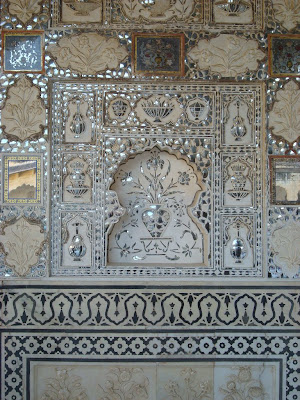Just finished reading War and Peace by Leo Tolstoy. It has been said that every book lover has two favorites. If it is true, one is ought to be War and Peace. A book possessed by many and read by few. Having once read it, one is certain to turn it to again, to get mesmerized and to experience ever possible human emotion. The characters of this book became as real to us as people whom we have know all our lives. Every possible human emotions find its place in this magnum opus.
Here I quote few of my favorite excerpts from War and Peace
War & Peace-Book 10-Chapter VII-Para I
"A Good Chess player having lost a game is sincerely convinced that his loss resulted from a mistake he made and looks for that mistake in the opening, but forgets that at each stage of the game there were similar mistakes and none of his moves were perfect. He only notices the mistake to which he pays attention, because his opponent took advantage of it. How much more complex than this is the game of war, which occurs under certain limits of time, and where it is not one will that manipulates lifeless object, but everything result from innumerable conflicts of various wills! ".
War & Peace-Book 14-Chapter XII-Para IX
"He learned that there is no condition in which man can be happy and entirely free, so there is no condition in which he need to unhappy and lack freedom. He learned that suffering and freedom have their limits and that those limits are very near together; that the person in bed of roses with one crumpled petal suffered as keenly as, sleeping on the bare damp earth with one side growing chilled while the other was warming."
Thursday
Friday
A visit to Amber
Amber Fort is located in Jaipur, Rajasthan, India. Amber fort is all built in white marble and sandstone and known for its artistic style which is blend of Hindu-Mugal architecture.
As we move in we come across Diwan-i-Aam (Hall of Public Audience). Patterned after similar halls in Mughal Palaces, Diwan-i-Aam was the place where Emperor gave audience to his subjects and met his officials.
Diwan-i-Aam (Hall of public Audience)
As we move beyond Hall of public audience, we enter into Char-Bagh or Four Gardens. Char Bagh provides access to inner and private parts of palace.
Four Gardens lead us to Sukh Mandir. The Royal family used to live there during the mid days of summer season. The walls of the chamber have beautifully designed lime work in mughal architecture.
Sukh Mandir
Now comes the Diwan-i-Khaas (Hall of Private Audience). Diwan-i-Khaas is also called Sheesh Mahal or Glass Palace because of beautiful mirror glass work. The emperor used to meet his special guests, like envoys from other rulers, here.
Diwan-i-Khaas (Hall of Private Audience)
Subscribe to:
Posts (Atom)













